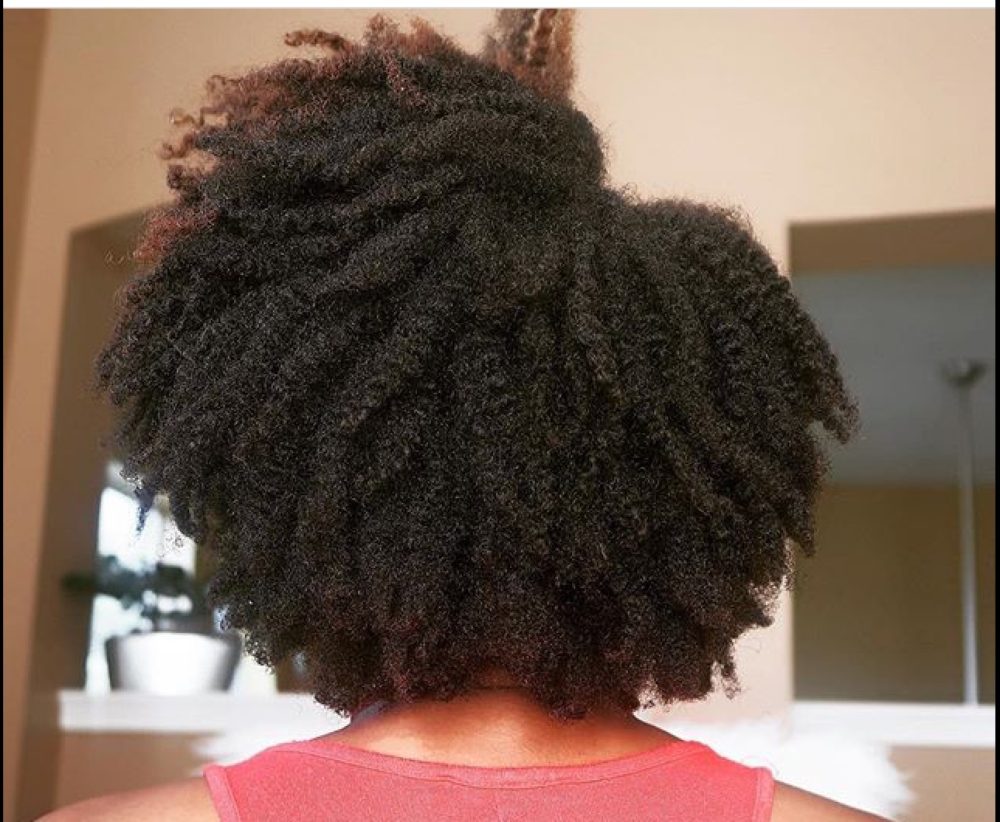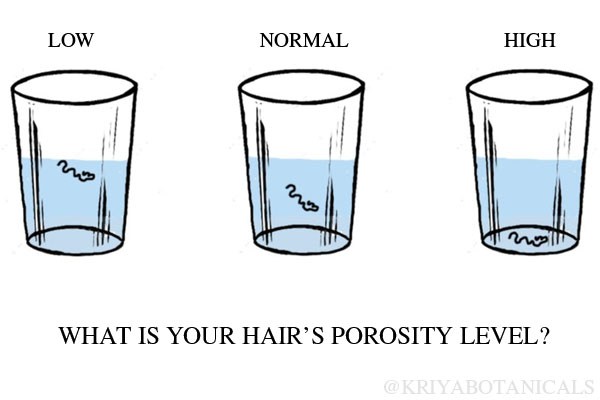
photo source: instagram @naijahaircangrow
Growing healthy hair is what most of us dream of and it is a possibility for almost everyone (unless you’ve got a medical condition), but before this can be achieved you need to understand your hair. Hair texture, scalp condition, porosity, these are all factors that you discover, along your healthy hair journey, to be crucial at determining the health of your hair. In this post I will be shedding some light on hair porosity, and how an understanding of this will greatly improve your journey to healthy hair.
What is Hair Porosity?
Hair Porosity refers to the ability of your hair to absorb and retain moisture, and with our texture of hair moisture addition & retention is CRUCIAL. Knowing and understanding the porosity of your hair is the key to determining and streamlining a daily hair regimen that’s actually effective. The easiest and most common method to determine your porosity is ‘The Cup Test”.

photo source: naturamagazine.com
Place a few strands of hair in a glass of water, you can just use some of your shed hair that’s trapped in your comb. If they float, you may consider it ‘low’ or not absorbent; stays in the middle, it is considered ‘normal,’ hair sinks to the bottom, you have ‘high’ porosity hair. So now that you know the porosity of your hair you are better informed to start introducing methods that better allow your products and hair treatments have an effect on the health and growth of your hair.
Low Porosity
This when your hair is unable to absorb or retain moisture this is because the cuticles are close together or closed on the hair shaft, blocking any moisture or liquid to be absorbed. Cream or liquid products just lay on the hair having little or no effect. Think of low porosity as a closed door where nothing can get in.
Hair thrives on moisture and with low porosity hair the trick is to get it into those closed hair cuticles. There are a few things you can start incorporating into your regimen:
- Heat: Opens the cuticles layers and allows for better water absorption. After washing your hair apply your deep conditioner. Place a plastic cap over your hair and steam under a hooded dryer, steamer, or thermal cap for 20-30 minutes.
- At the styling stage of your regimen, use the LCO (liquid/leave-in, cream, oil) method not the LOC (liquid/leave-in, oil, cream) method, as Oil is a sealant and should be used on low porosity hair as the last step. It is advisable to use lighter oils which works best for this hair type. Examples of Oils to use are as follows; Argan Oil, Grape seed Oil, Baobab Oil, Sweet Almond Oil, Jojoba Oil, Hemp Seed Oil and Apricot Oil.
- Use water-based products for your conditioners, leave-ins, styling aids (such as hair milks).
- Avoid heavy butters, these can produce product build up.
High Porosity
This hair-type is usually very porous, it absorbs and loses moisture quickly. People with high porosity hair tend to complain a lot about dryness at the end of the day no matter how moist it was in the morning. This is because the cuticles of the hair shaft are open, so everything applied to the hair can’t stay in. High porosity hair can be likened to an open door; so the major concern is keeping the moisture in. There are several ways this can be achieved:
- Layering: This simply means layering products in order to lock in the moisture, this can be achieved with the L.O.C method, you can start out with a leave-in, follow with an oil, then with a cream and/or a butter or pomade.
- Sealant: As the name indicates, sealants trap moisture into your hair. For those with thick hair, common sealants used for high porosity include heavy oils such as olive oil and castor oil. You can also use butters or pomades infused with oil. Fine/thin hair may be weighed down by the use of heavy oils or butters. You may need to use a lighter oil or cream to seal such as grape seed oil.
- Protein Treatments: Will help build up the strength of your hair thus protecting against further damage. Do protein treatments as often as you think your hair needs.
Normal Porosity
This is the ideal hair condition, it absorbs and retains moisture, doesn’t dry out throughout the day. Your focus is finding and using products that work best for your hair.

photo source: essence.com
There are no definitive best care practices that apply to your hair type, but you must ensure to continually monitor your hair to evaluate its needs.

